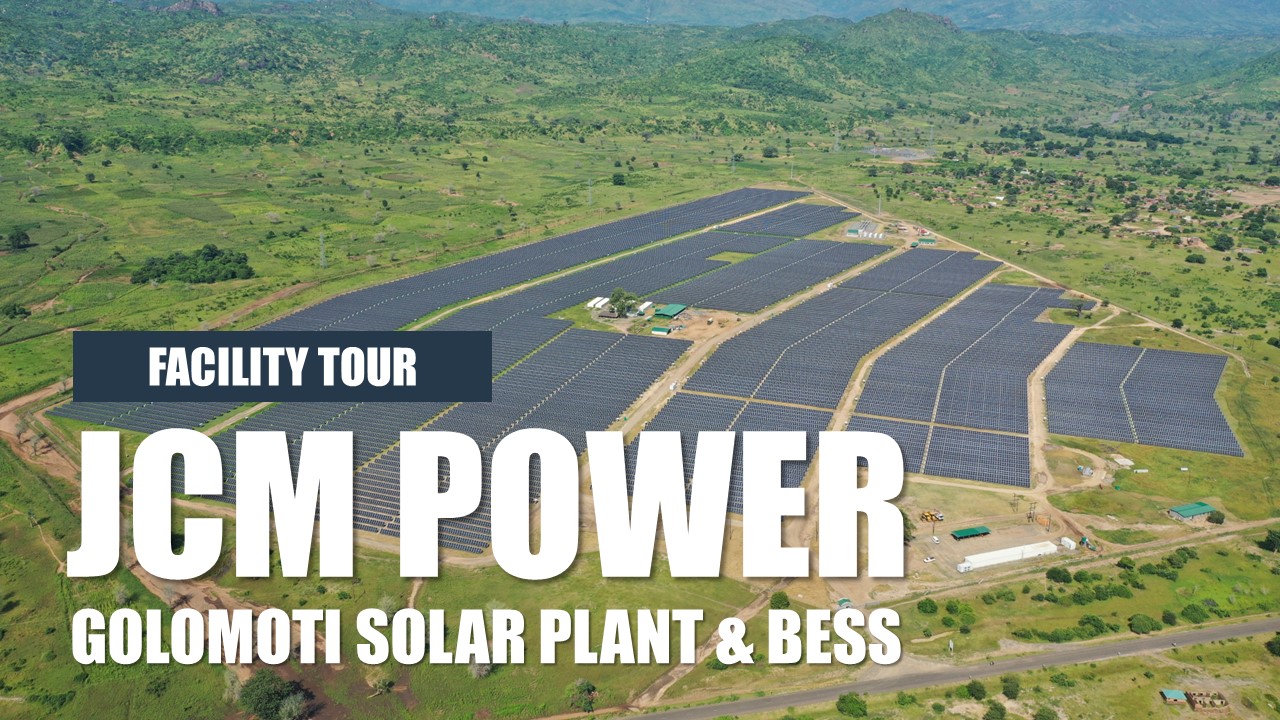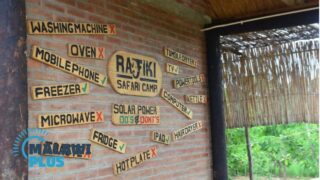JCM POWER – Golomoti Solar Plant & Bess Facility Tour
About Golomoti JCM Power
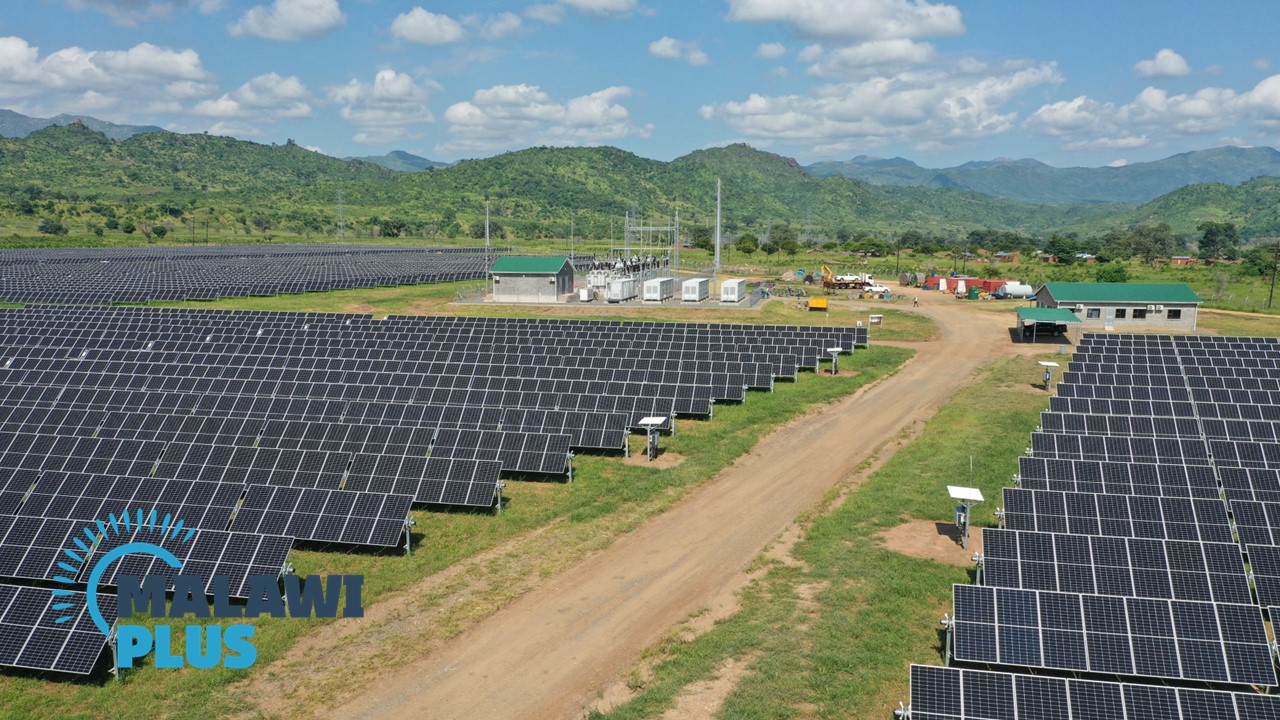
| Establishment | 2021 |
|---|---|
| Total Number of Staff | 24 (17 workers from the community & 7 corporate staff) As of April 2023 |
| Location | Golomoti, Dedza, Malawi |
| Phone | +265 (0) 993 663 295 +265 (0) 881 126 340 |
| jbanda@jcmpower.ca | |
| Website | https://jcmpower.ca |
JCM Power is a renewable energy Independent Power Producer operating clean energy projects in South & Southeast Asia and sub-Saharan Africa.
The company has plants in Malawi, JCM has the Salima Solar plant as well as the Golomoti Solor plant, and Battery Energy Storage System (BESS).
Golomoti Soar and BESS is located in Malawi’s central region, approximately 100km southeast of Lilongwe.
The plant was developed by JCM Solar Corporation and is co-owned by JCM Power and InfraCo Africa.
Civil works on the solar plant began in eary 2021 and were completed in December of the same year.
The plant sells the electricity to the Electricity Supply Corporation of Malawi (ESCOM).
Facility Tour
“The plant sells the Electricity to ESCOM.“
Facility 1 Bifacial Crystalline Solar PV Modules

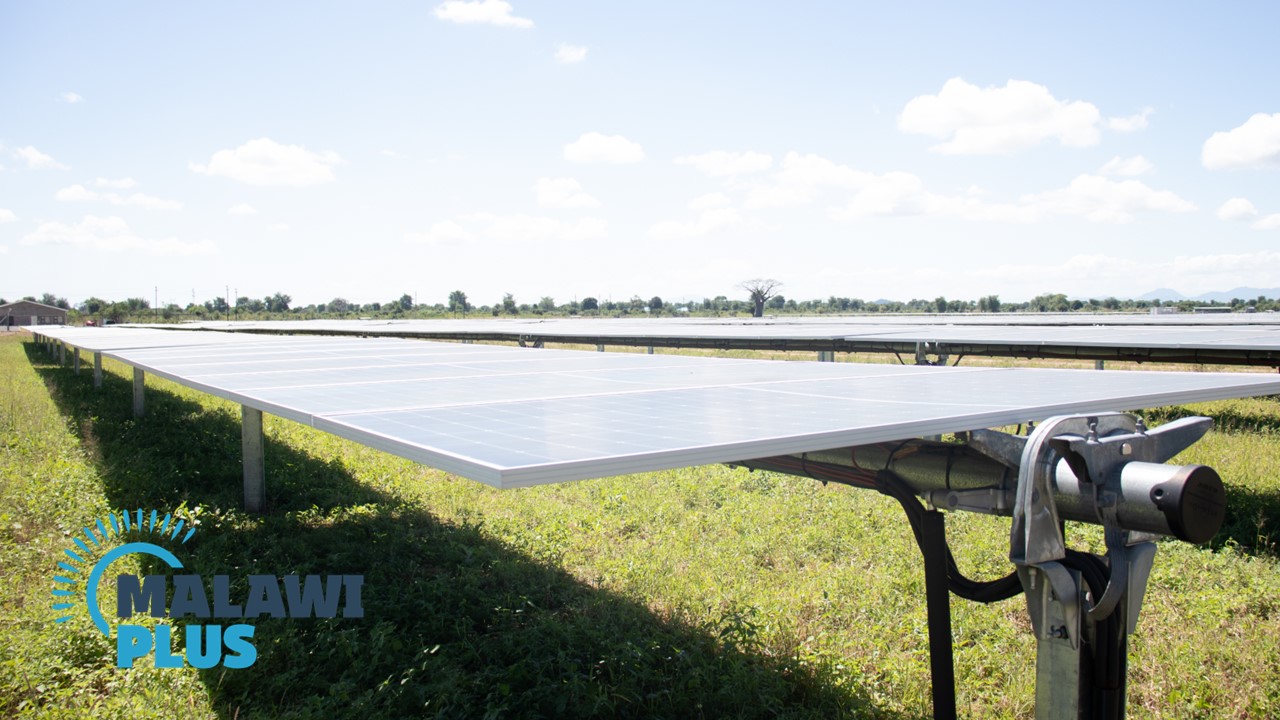 The Bifacial Solar Photovoltaic (PV) panels absorb sunlight directly using the solar cells on the front of the panel.
The Bifacial Solar Photovoltaic (PV) panels absorb sunlight directly using the solar cells on the front of the panel.
The back of the panel absorbs the portion of sunlight that bounces around.
Facility 2 Tracking Control Panel
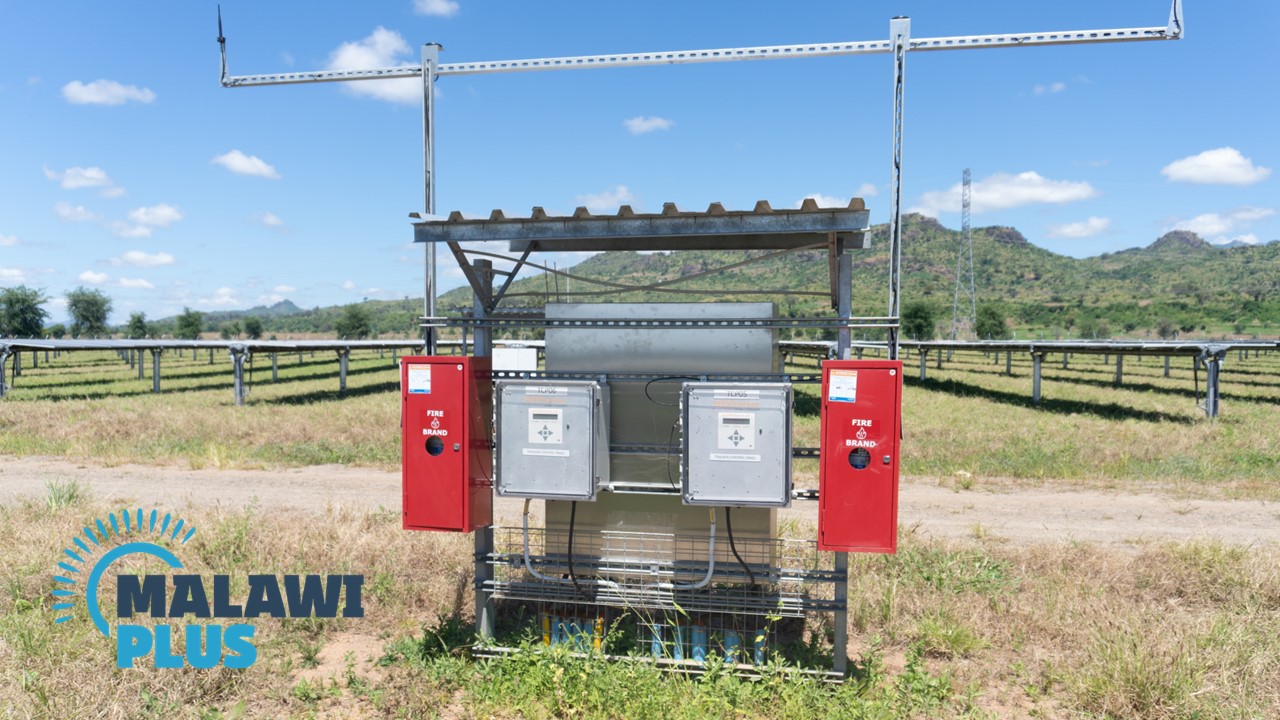 This gives commands to the tracking system antenna located with each panel to tilt the panel, for instance, every 15 minutes.
This gives commands to the tracking system antenna located with each panel to tilt the panel, for instance, every 15 minutes.
Facility 3 Tracking System Antenna
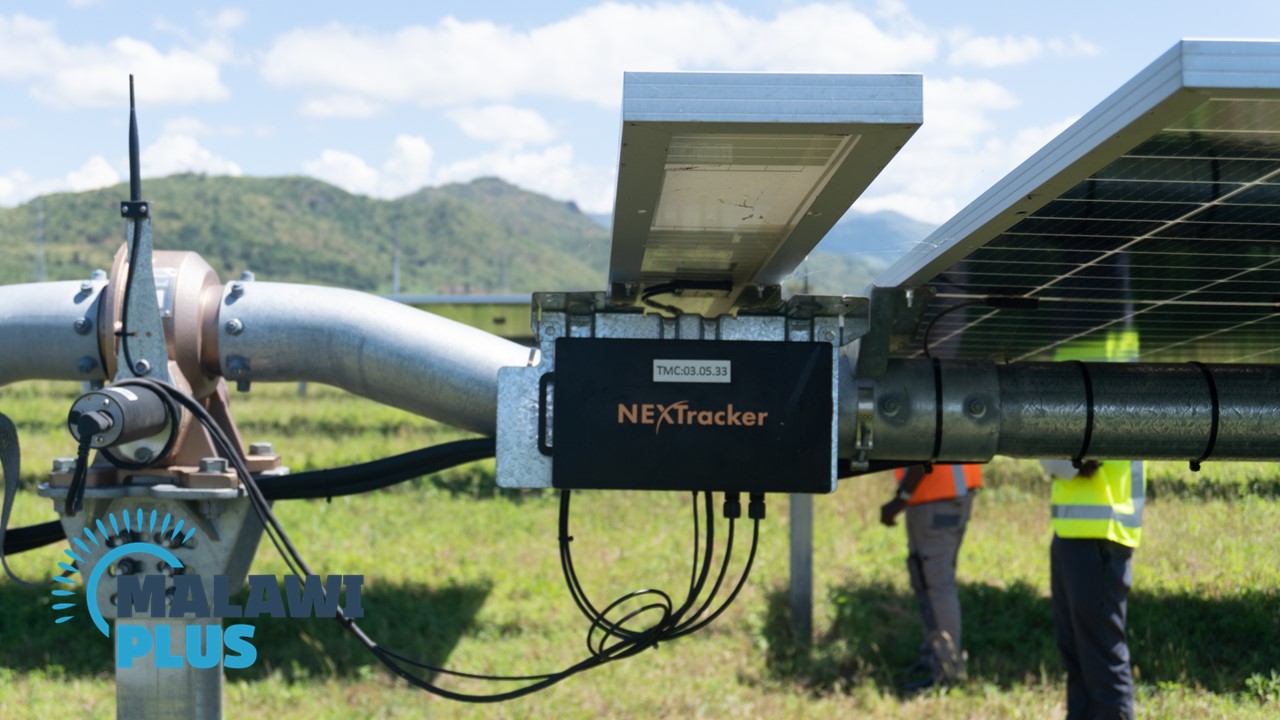 The Solar PV panels have single-axis trackers, a tracking system that automatically rotates the panel to ensure maximum sunlight.
The Solar PV panels have single-axis trackers, a tracking system that automatically rotates the panel to ensure maximum sunlight.
This receives commands from the tracking control panel which starts the motor and the panel rotates.
Facility 4 String Inverters
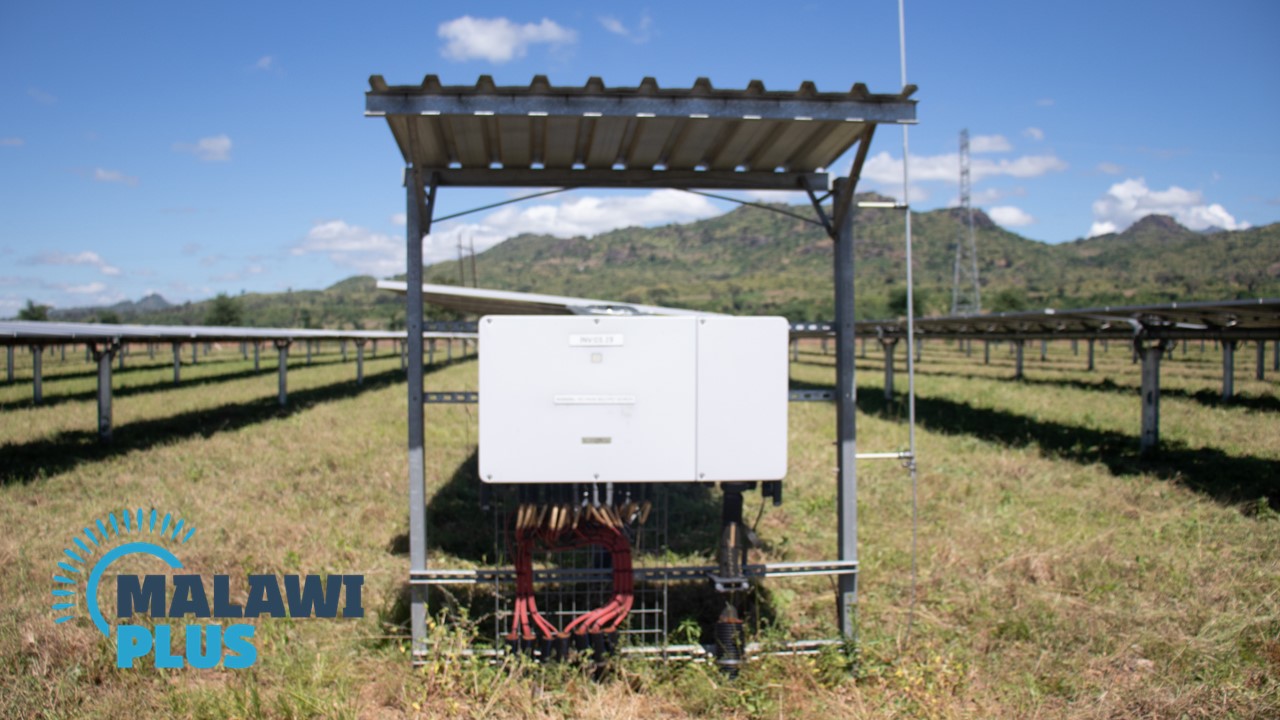 There are 100 inverters in the PV field, each inverter has a capacity of 250 kilowatts with 24 strings.
There are 100 inverters in the PV field, each inverter has a capacity of 250 kilowatts with 24 strings.
Each string uses 28 panels, which means that each inverter has 672 panels.
The inverter converts the direct current (DC) from the panels to alternating current (AC).
The DC capacity is 1,500 watts which is inverted to 800 volts AC.
Facility 5 Step Up Transformer
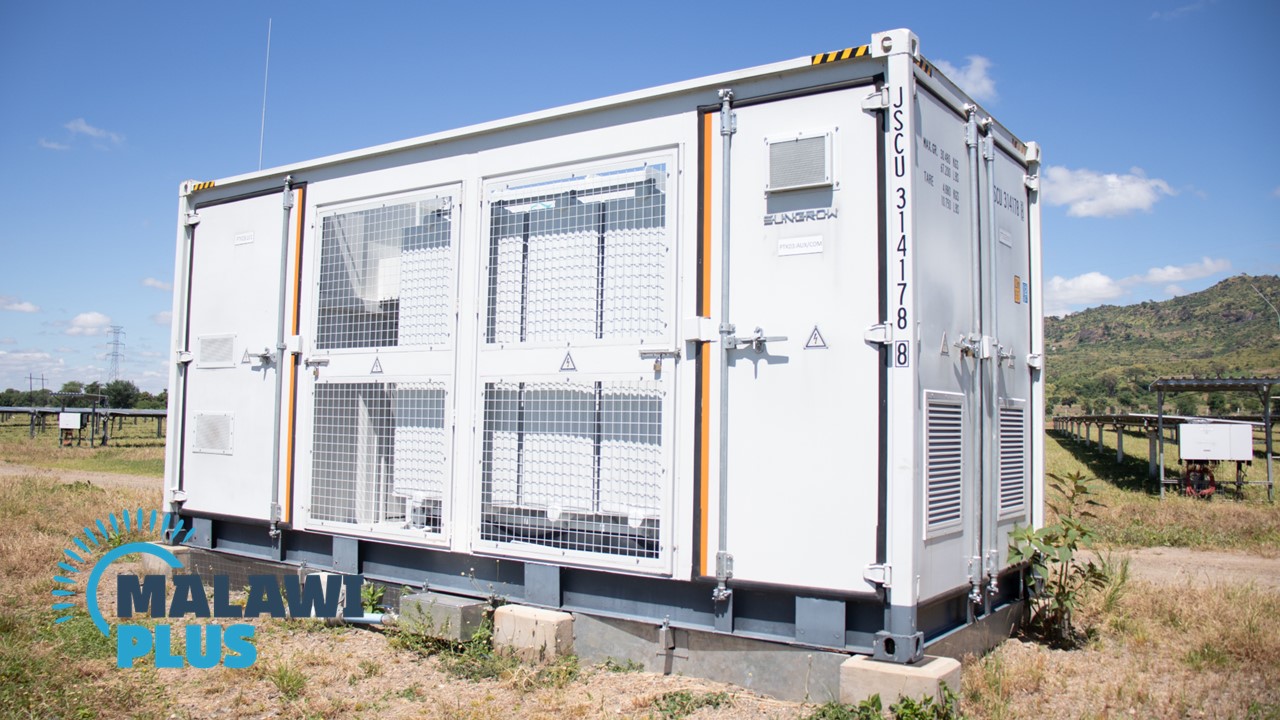 The 800 volts AC is taken to the step-up transformer.
The 800 volts AC is taken to the step-up transformer.
The tansformer steps the voltage from 800 volts to 22 KV.
The 22KV goes to the substation.
Facility 6 BESS
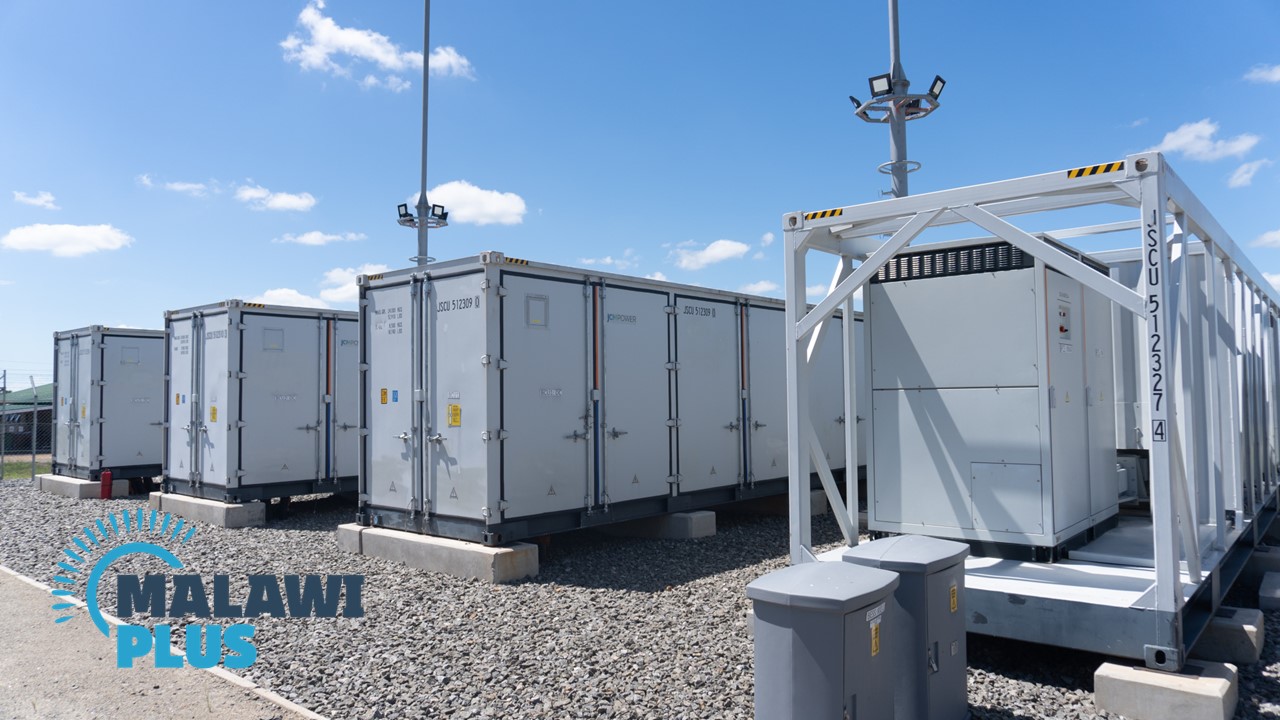 The Battery Energy Storage System (BESS) is a system of lithium-ion batteries that is the first to be installed in sub-Saharan Africa.
The Battery Energy Storage System (BESS) is a system of lithium-ion batteries that is the first to be installed in sub-Saharan Africa.
The BESS stores surplus energy during times of high production.
The BESS dispatched 3MW-3h during the evening to ESCOM.
The BESS is also used for solar smoothing and under-frequency support.
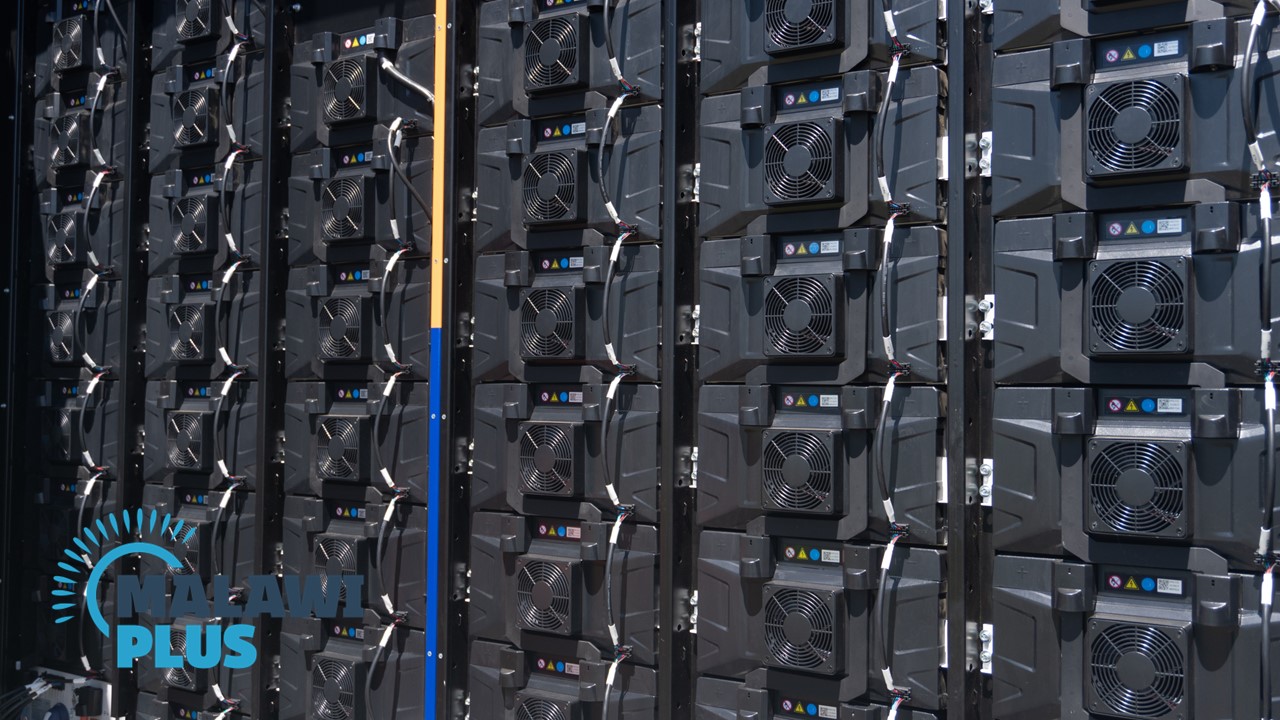 The BESS Consists of a 5MW – Power Conversion System (PCS) skid containing 1 x 6.3MVA Transformer (0.69 / 22KV) 4 x 1.25MW Inverters and 10 MWh Battery System containing 3x Battery Container units each with approximately 3.4 MWh of storage.
The BESS Consists of a 5MW – Power Conversion System (PCS) skid containing 1 x 6.3MVA Transformer (0.69 / 22KV) 4 x 1.25MW Inverters and 10 MWh Battery System containing 3x Battery Container units each with approximately 3.4 MWh of storage.
The inverters convert DC to AC which then goes to a transformer that steps up the 800 volts to 22kv.
Facility 7 Common Bus Bar
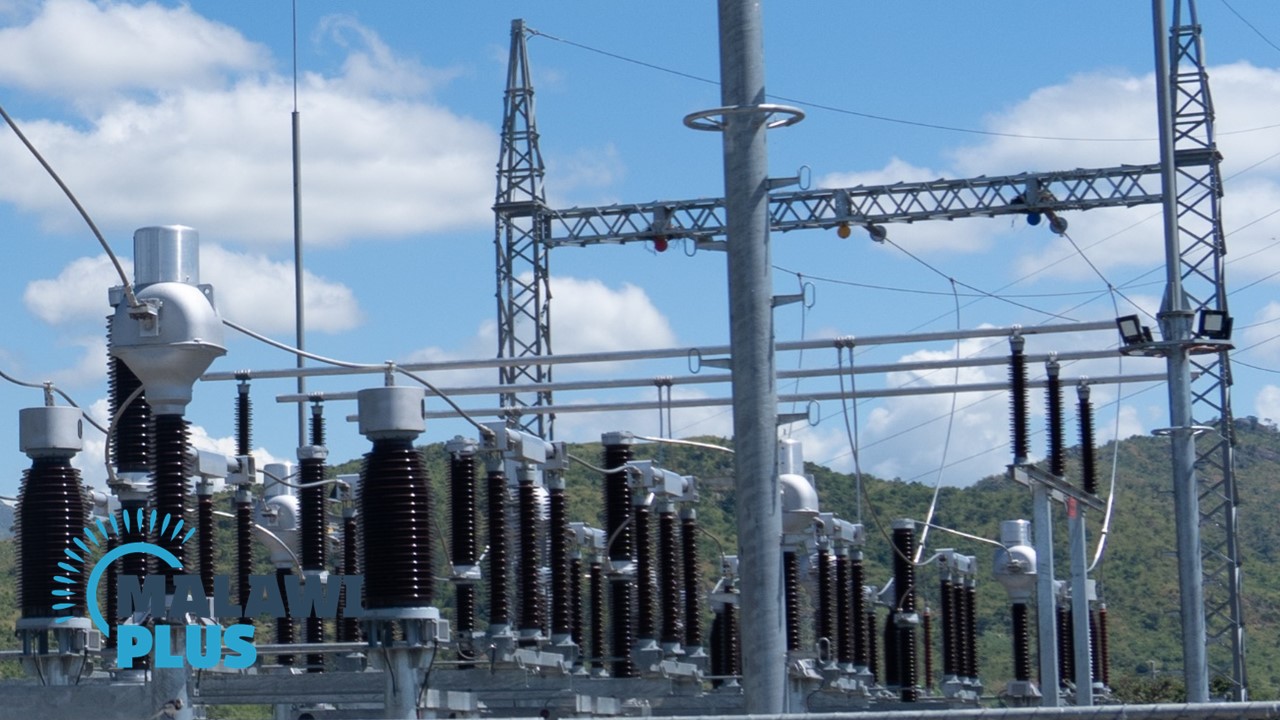 The cable from the BESS transformer and the transformers in the PV field goes to the common bus bar.
The cable from the BESS transformer and the transformers in the PV field goes to the common bus bar.
This is the point where current from the OV field and BESS transformer is collected and distributed.
There is one cable here that goes to another step-up transformer.
Facility 8 Step-Up Transformer
 This transformer steps up 22KV to 132KV.
This transformer steps up 22KV to 132KV.
Here, the electricity is ready to be dispatched to the national grid via the ESCOM substation and transmission lines.
At night, when the power plant needs electricity to run, this transformer becomes a step-down transformer for the plant to tap electricity from the ESCOM.
During the day, the plant uses its own generated electricity.
The electricity is transmitted to the national grid via the ESCOM substation, ready to be used by the public.
Facility 9 Metrological Station
 This is where much indormation about the weather is recorded so that the personnel respond accordingly.
This is where much indormation about the weather is recorded so that the personnel respond accordingly.
There are several instruments such as anemometers, rain gauge, as well as Pyranometers for measuring irradiance and several other instruments.

